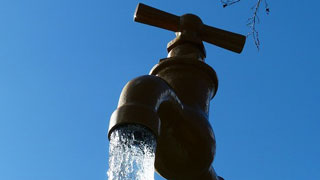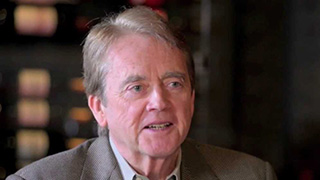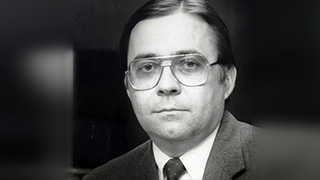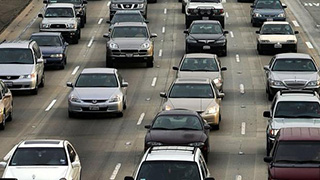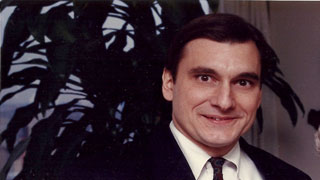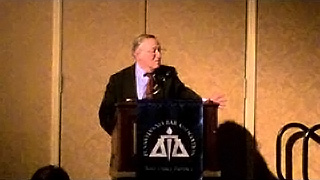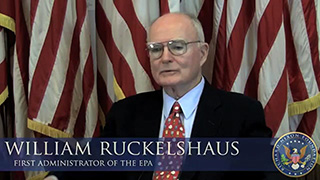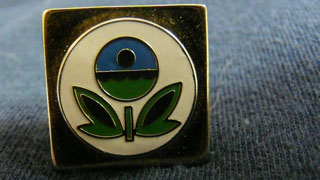


Oral History of the EPA — As Only We Alumni Can Tell It!
Early Implementation of the Clean Air Act of 1970 in California
Chapter 3: State Implementation Planning - 12 minutes
John Wise lays out the setting for the litigation by the public interest firm. He later discusses how the litigation drove EPA into looking at land use and transportation as a source of measures to reduce auto air emissions. William Ruckelshaus discusses the Riverside vs. Ruckelshaus lawsuit, and his announcement of the proposed Federal plan in Los Angeles in 1973. Dave Calkins and David Souten describe the original SIP submitted by California to address the Los Angeles air pollution problem and how the Region proceeded to finesse a way to provide California more time to correct its unacceptable SIP. Mary Nichols then outlines how her public interest firm formulated and brought the lawsuit upon EPA, and what the mandatory injunction forced EPA to produce.
Audio Track - Chapter 3 - 12 minutes
THE INDIVIDUAL CHAPTERS
The individual "chapters" of the discussion are available for viewing individually as is the complete interview (77 minutes).
Chapter 1: Introduction and Background of the Development of Clean Air Legislation in the U.S. (10 minutes)
Dave Calkins summarizes the early history of air pollution control in the U.S. and the early Clean Air Acts that led to the passage of the landmark 1970 Clean Air Act. William Ruckelshaus talks about how he became the Administrator of the newly created Environmental Protection Agency.
Chapter 2: Regulatory Structure of the Clean Air Act of 1970 (13 minutes)
William Ruckelshaus describes the new CAA's extreme measures and deadlines. John Wise describes the air quality standards, stationary and mobile source control requirements. Dave Calkins and David Souten described the development of auto emission controls under the Act and later implementation.
Chapter 3: State Implementation Planning (12 minutes)
John Wise lays out the setting for the litigation by the public interest firm. He later discusses how the litigation drove EPA into looking at land use and transportation as a source of measures to reduce auto air emissions. William Ruckelshaus discusses the Riverside vs. Ruckelshaus lawsuit, and his announcement of the proposed Federal plan in Los Angeles in 1973. Dave Calkins and David Souten describe the original SIP submitted by California to address the Los Angeles air pollution problem and how the Region proceeded to finesse a way to provide California more time to correct its unacceptable SIP. Mary Nichols then outlines how her public interest firm formulated and brought the lawsuit upon EPA, and what the mandatory injunction forced EPA to produce.
Chapter 4: The California Federal Implementation Plan (19 minutes)
David Souten and William Ruckelshaus discuss the challenges of preparing a Federal Implementation Plan (FIP) to meet the court mandate to develop a plan within 9 months to attain the standards by 1977. John Wise describes how the Region worked with local governments to include land use and transportation control measures into the plan. Dave Calkins describes how the program to regulated indirect sources (shopping centers, parking lots, stadiums, etc.) was integrated into the plan, partially as a result of a companion suit by David Hawkins of the NRDC to require similar control efforts in 18 other areas of the nation that had severe ozone and/or carbon monoxide problems. Finally, Dave Calkins relates a very dramatic public hearing in Fresno, California reacting to EPA proposing limits on the use of 2-stroke motorcycles in the San Joaquin Valley during the smog season. This was an excellent example of public participation to influence EPA to develop a more reasonable set of measures to attain the air quality standards.
Chapter 5: Lessons Learned (23 minutes)
Perhaps the most important result from these various "stories" about how EPA was implementing the 1970 CAA were the "lessons learned" which are discussed in the final chapter by all the participants in the interviews. William Ruckelshaus discusses how the extreme requirements of the Act eventually led to a more reasonable, yet stringent approach to air pollution control in the U.S. David Souten reflects on his 40 years of experience in the air pollution field on how many of these early, and often dubbed draconian control measures, eventually began to reduce air pollution in the Los Angeles Basin.
Dave Calkins mused that much of our early success in passing Federal environmental legislation was the result of a very bipartisan effort in the Congress to enact strong laws. Finally, Mary Nichols concludes by stating her belief that the "Clean Air Act is the most effective piece of legislation that Congress has ever passed." She notes that many of the approaches in addressing air pollution over the years provide a basis for a quality effort to address climate change and global warming.
THE INTERVIEW AS A WHOLE (77 minutes)
Three former Region 9 employees (John Wise, Dave Calkins, and David Souten) and Bill Ruckelshaus and Mary Nichols tell the story of how EPA applied the new Clean Air Act of 1970 with its stringent standards and deadlines to the very difficult challenge of cleaning up the most polluted region in the nation--the Los Angeles Air Basin.
The introduction to the interview is as follows:
This oral history video tells the story of how the very new agency, the U.S. Environmental Protection Agency, dealt with implementing a very difficult and complex new federal law, the Clean Air Act of 1970, in what was undeniably the most polluted region of the nation - the Los Angeles Air Basin. Three of the early members of Region 9 - John Wise, Dave Calkins, and David Souten - were closely involved in the EPA air program at that time and provide extensive coverage of the development of the Clean Air Act, the lawsuit leading to the Federal Implementation Plan for Los Angeles, and related actions to address indirect sources of air pollution and reactions by the public to EPA's proposals.
Mary Nichols, current Chair of the California Air Resources Board who brought the lawsuit against the EPA in 1972, reflects on the litigation as well as the impacts of the plans on land use and transportation control strategies. William Ruckelshaus, the first Administrator of the EPA, discusses his role in addressing the lawsuit and announcing its content to the Los Angeles press and citizens. Finally, all the interviewees reflect on the important lessons learned from the actions in Los Angeles - need for improved public participation, phasing in of certain land use and transportation controls, and supporting reasonable and more credible deadlines as occurred with the passage of the 1977 Clean Air Act Amendments.
For an even fuller history of these events, see the written document CAA Act in California--a fuller history below.
RELATED PUBLICATIONS:
|
Related Documents |
Newest Interviews
| The Complete Interview | 39m | |
| C1: | Joining the Administration: Relationship with the President | 8m |
| C2: | My Agenda at EPA | 6m |
| C3: | International Issues | 9m |
| C4: | Priorities at EPA | 5m |
| C5: | EPA Leadership and Staff | 3m |
| C6: | EPA's Challenges | 4m |
| C7: | Major Accomplishments | 5m |
| The Complete Interview | 74m | |
| C1: | An Unusual Arrival at EPA | 18m |
| C2: | Chernobyl's Radiation Emergency | 8m |
| C3: | OSWER & Superfund Reauthorization | 8m |
| C4: | Stratospheric Ozone & Climate Change | 19m |
| C5: | Management & Core Values | 23m |
| The Complete Interview | 55m | |
| C1: | Beginning a New Agency | 13m |
| C2: | Setting up the New Agency's Structure | 17m |
| C3: | DDT & the Clean Air Act of 1970 | 13m |
| C4: | Leadership at the New Agency | 12m |
Headline Media, Bob Bell (Developer), Nicole Lane (Developer), and Chuck Elkins & Barry Gilbert (Members)
